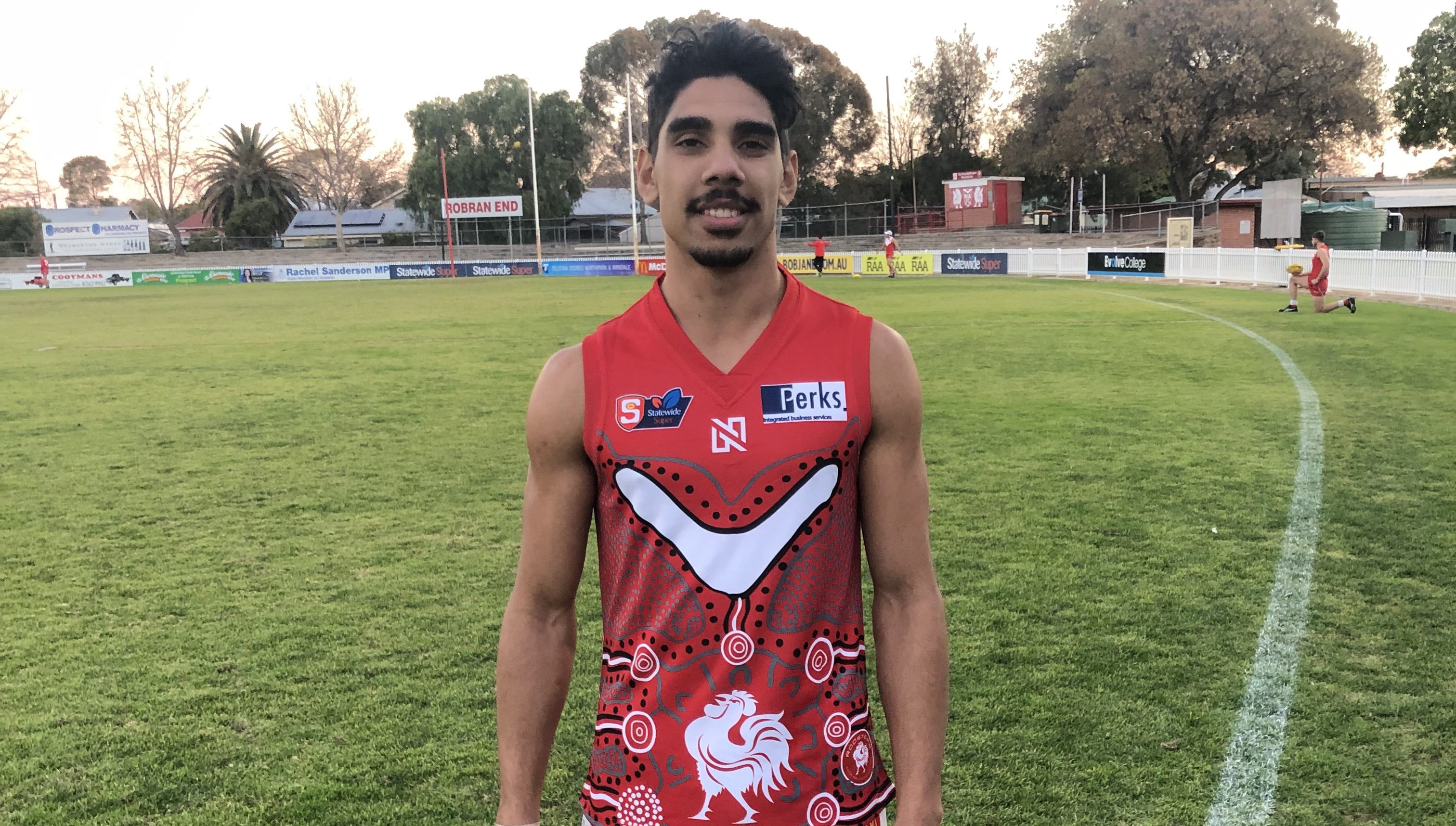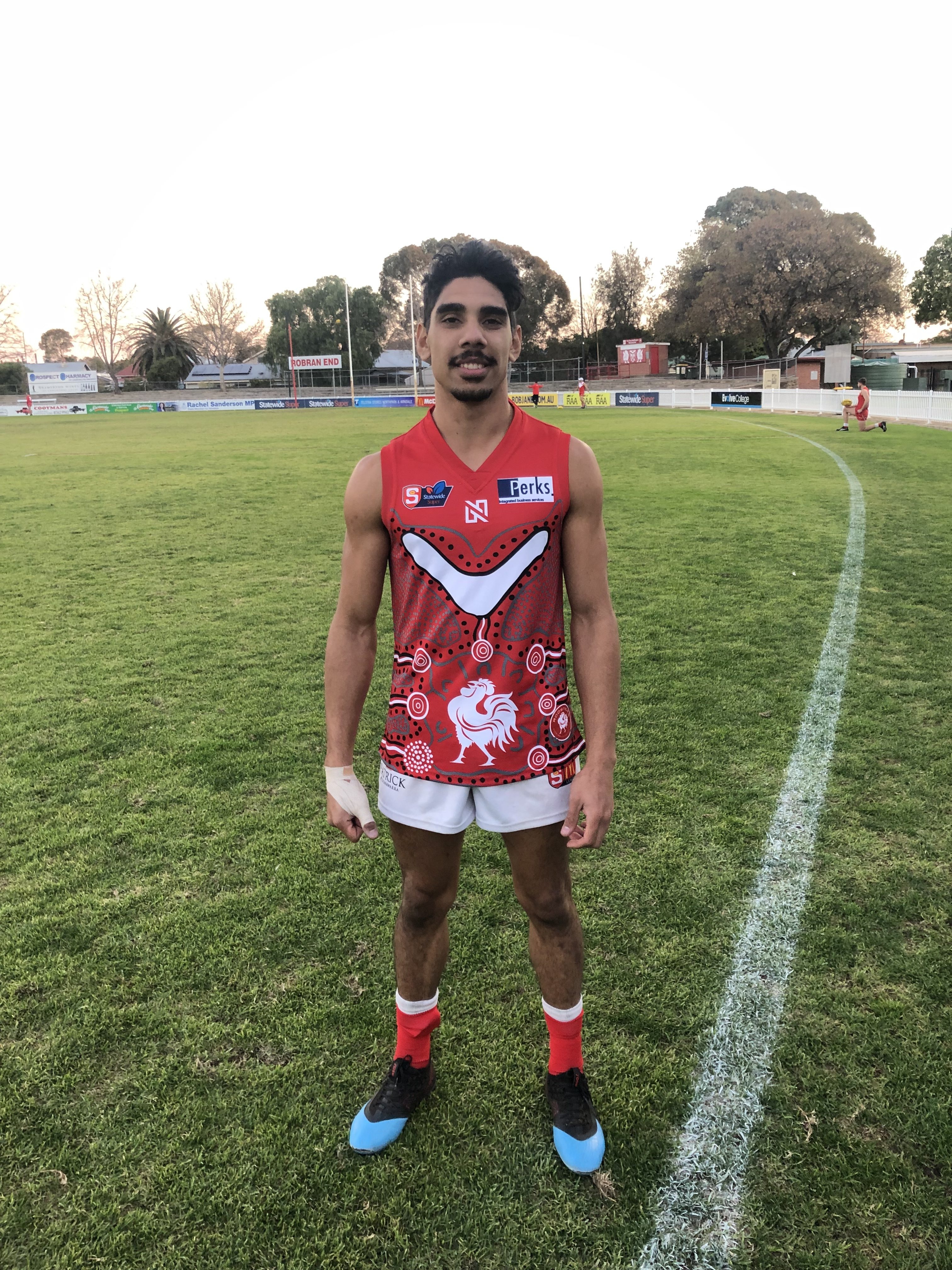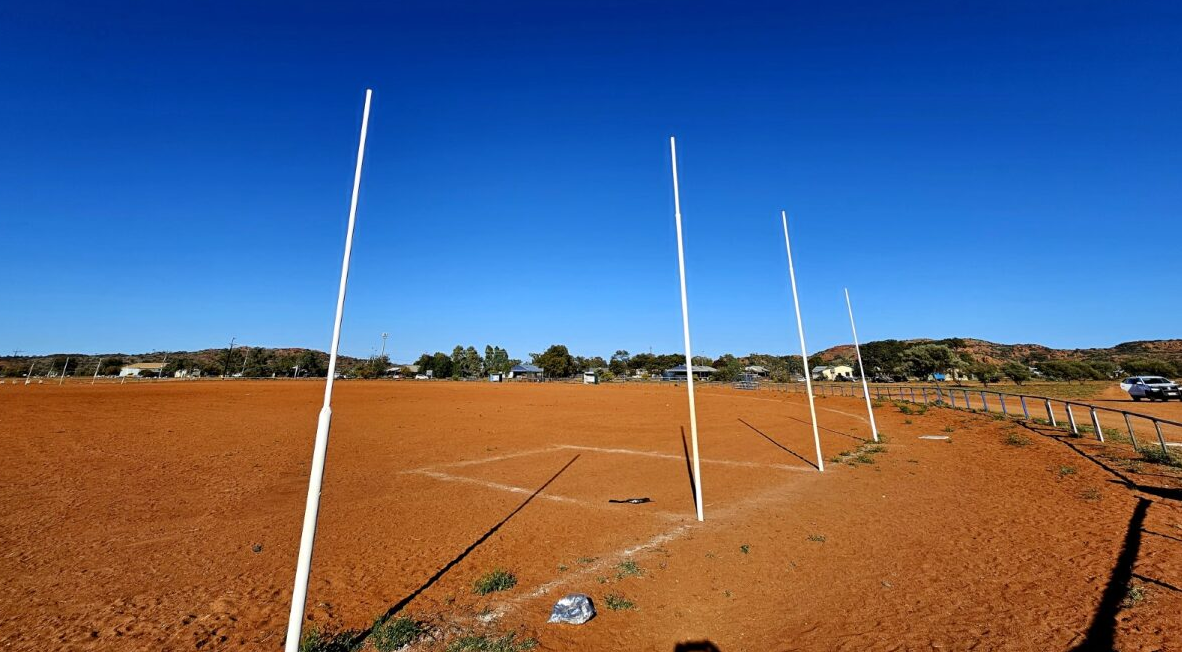
North Adelaide’s Rich Indigenous History
By North Adelaide FC History Committee
This year, as part of SANFL Indigenous round, North Adelaide will be taking the field wearing their new indigenous guernsey designed by player Keanu Miller, a Narranga/Mirning man.
With indigenous round upon us, and the duel naming of Prospect Oval with the Kaurna name of Payinthi Yarta as part of the reconciliation initiatives of Prospect Council, we look back on the role indigenous players had in the earliest days of North Adelaide and beyond.
The legacy and legend of the Raukkan (Point McLeay Mission) players
Harry Hewitt hailed from Raukkan and was the first indigenous player to represent Medindie (the forerunner to the North Adelaide Football Club) (#1). Harry is believed to be the first indigenous player to play in the SAFA (aka SANFL).(#2)
Raukkan is the true and now permanent name for the country that colonists named Point McLeay. Raukkan has been the heart and home of the Ngarrindjeri people for thousands of years and was known as the place where the elected “parliament” of Ngarrindjeri leaders would meet and govern. In the last century, a mission was established there, located on the shores of Lake Alexandrina, about 80km from Adelaide, and became known as Point McLeay Mission.
Many Australians will have seen Point McLeay Mission without even knowing it. It has been featured on the artwork of the fifty-dollar note since 1992, as it is also the homeland of David Unaipon, the acclaimed indigenous inventor of mechanical sheep shears, and a prominent leader, author and advocate for indigenous people. He also features on the $50 note.

North Adelaide’s Keanu Miller models the front of the club’s 2019 Indigenous Round guernsey.
But back to football. Harry Hewitt was a prominent athlete in the late 1880s in South Australia, and Adelaide football crowds had witnessed his prowess in games such as the annual North vs South games. He also skippered exhibition games against a Combined Colleges side (St Peters, PAC and Whinham) match and against the Adelaide SAFA side, amongst others and was known to be a fine cricketer as well.
Hewitt’s talent caught the attention of many in football, and he was mentioned many times in the newspapers of the day. The Medindie Officials hadn’t failed to notice him, and he was picked to play for Medindie on 22nd June 1889 on the Adelaide Oval against Port Adelaide.
Hewitt stood out as playing a fine game as reported in the “Port Adelaide News and Lefevre Peninsula Advertiser” the following week, where he impressed with his play and by playing in bare feet.
“The Medindies had their full strength; Hewitt, an aboriginal, was a decided acquisition, and although he played barefooted was about the best man amongst them, his alacrity all through the game eliciting the applause of the spectators. He, too, appeared to have a thorough knowledge of the rules of the game, as he never had a mark given against him the whole of the afternoon.”
The result of the match was predictable for the time (7-7 to 1-4) with Port Adelaide being one of the strongest clubs in the league and Medindie a recent (and struggling) addition to the league.
Alfie Spender, another talented Raukkan player joined Hewitt on the field for the game against Norwood the following week. Both played solid games for “The Dingoes” but an injury depleted Norwood won (3-10 to 0-0).
Two weeks later, a team from Raukkan came to Adelaide to play Medindie on the Kensington Oval. The result was a victory to Medindie as they doubled the score of the visitors (4 goals 4 behinds to 2 goals 2 behinds). “The Advertiser” summed up the game as such …
“The game was by no means uninteresting, the natives entering into the play with spirit.”
Both Alfie Spender and Harry Hewitt were high in the best players from the Raukkan team.

North Adelaide’s Keanu Miller models the back of the club’s 2019 Indigenous Round guernsey.
KENSINGTON OVAL – Today the Point
Mcleay Mission Aboriginals play the
Medindies at 2.45 and during the interval
there will be an exhibition of boomerang-throwing.
(South Australian Register, Saturday 13 July 1889)
Player records from this time are incomplete to say the least but we do know on the 19th July 1890 another Raukkan player, John Wilson, lined up for Medindie against South Adelaide and again in August of the same year. His name also pops up in relation to a Medindie football match on 23rd May 1891, alongside Harry Hewitt.
Throughout 1891, Hewitt was named for a number of sides and in June 1891 was named for Medindie and again showed his worth in the side’s win against Adelaide on the Kensington Oval.
“A word of praise must be given to Harry Hewitt, the aboriginal. Only once during the game, when he got hold of the ball, was he caught and spoiled. His running especially deserves recording, and he ought to prove of great benefit to the Medindies”. (The Register; 1st June 1891)
The weekly paper “The Adelaide Observer” considered him best afield for the match, and we find out he is still playing barefoot.
“Among the winners Hewitt, the aboriginal, must take first place. His running was as usual excellent he never gets in the ruck (probably he is afraid of his bare toes),but sharks the ball when it happens to come outside the scrimmage, and is off.” (Adelaide Observer; 6th June 1891)
On the 1st August 1891, Port Adelaide took on Fitzroy from the VFA and Hewitt was picked to play for Port in an exhibition match against the Victorian side. At that time, with no contracts or an electorate system in place, players could be picked for more than one side and on this occasion, Hewitt was featured for Port.
At the annual North versus South match (#3) played on the Adelaide Oval, on 24th June 1892, South won the game by six goals (9-5 to 3-8. remembering behinds didn’t count back then).
The Raukkan players featured strongly, with Hewitt and Wilson amongst the best playing for Souths, and joining them were two talented brothers from Raukkan, James and William Rankin.
“Speaking of the individual players Hewitt and Wilson, of the Point McLeay Station, were the leading lights of the blues, and they have been thought so much of by the Medindie Club as to be chosen, together with one of the Rankins, to play for them in next Saturday’s Association fixture.” (Adelaide Observer; 2nd July 1892)
The following Saturday Hewitt, Wilson and one of the Rankins lined up for “The Dingoes”. This almost certainly makes them the first team playing in the highest level of that State to have three indigenous players take to the field in the same team.
“An interesting feature of the Adelaide Oval match will be the presence in the fieId of Hewitt, Wilson and Rankin, the three Point McLeay “natives” who created such a good impression on the city arena on Saturday last in the match between the representatives of the country district’s north and south of Adelaide. The smart and clever work of Hewitt and “Wilson will be worth witnessing …” (The Register; 2nd July 1892)
Unfortunately, their opponent on the day, South Adelaide, was a powerhouse of football in those days and Medindie were very much a struggling club. The result of the game reflected this in the score South Adelaide 10 goals 23 behinds to Medindie I goal 4 behinds.
Over a decade later, on 21st July 1906, John Wilson’s younger brother Charles lined up for North Adelaide in their match against Sturt. Despite a promising game, it was unfortunately to be his only game in red and white.
The legacy of the Raukkan talent continued last year when, on September 23rd, Robbie Young, a Ngarrandjeri man, became the first indigenous player to play in a Premiership side for North Adelaide. He joins a very talented circle of players to emerge from that region.
North Adelaide pays respect to their elders, past and present, and the immense contribution that Raukkan has made to the Club.
As an interesting side note to the early history of the Club, let’s fast forward to the last century.
After four impressive games in the reserves, in the last round of 1977, Alice Springs teenager Greg McAdam, who was staying in Adelaide with his uncle Elliot, was picked to make his league debut. Greg was only 16 years, 6 months and 9 days old. He went on to become a champion at North Adelaide and was the first indigenous North Adelaide player to win North’s Best and Fairest (in 1980) and to represent the State (in 1982).
In Round 5 of 1982 Greg lined up alongside Les Turner and Lance White, from Alice Springs, to take on Norwood at Norwood Oval. It was the first time three indigenous players had lined up in the same side in red and white since the 1892 match.
(Many thanks to Barry Dolman and Bernard Whimpress for their help in the research, and David O’Hara for his help with player statistics.)
(#1). The Medindie Football Club began in 1881 as a “parklands team”. They graduated to the SAFA in 1888. In 1893 they changed their name to the North Adelaide Football Club, which still exists today. The only thing that changed in 1893 was the name. The colours (red and white), the jumper and admin and players all remained the same.
(#2). The SANFL began in April 1877. It was known as the SAFA from 1877-1906, the SAFL from 1907-1926 and the SANFL from 1927 to the Present Day. It is still the same competition
(#3). The annual North versus South matches that were popular in the late 1800s were between players that lived North of the GPO and those that lived South of the GPO.
Related News
-
 First Nations
First NationsCrows victorious in SANFL APY League decider
-
 History
History2025 West End SA Football Hall of Fame Inductees
-
 Hostplus League
Hostplus LeagueNorth Adelaide appoint Josh Francou as Hostplus SANFL League coach
-
 First Nations
First Nations2025 SANFL APY League Grand Final Match Preview
-
 Snapshot
SnapshotRound 19 Hostplus SANFL Snapshot – Sunday
-
 Milestone
MilestoneDyson’s back and forward toward 100 games
-
 Hostplus League
Hostplus LeagueRoosters rally for Sam
-
 First Nations
First Nations2025 SANFL APY League Finals set to start







